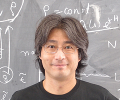Six hundred (600) particle physicists gathered for discussions of the physics case for various options on the future of particle physics. This process to update the European Strategy for Particle Physics is mandated by the CERN Council every 6 or 7 years and this is the third time. In addition to people in Europe, there was a substantial participation from other regions, including the Americas, Asia, and Oceania. The Open Symposium was held in Granada, Spain, from May 13 to 16.
For the long-term future, there was substantial interest in CERN hosting a hadron collider at a significantly higher energy than the Large Hadron Collider (LHC). There is ongoing effort to develop high-field superconducting magnets based on niobium-tin (Nb3Sn) alloy. Good progress was made for triplets needed for the high-luminosity LHC upgrade with 11 tesla. The hope is to achieve 16 tesla, which will allow for a 100 tera-electronvolt (TeV) proton-proton collider in a 100 kilometer tunnel. The material is brittle and how to withstand the pressure from the magnetic field is one of the main development items.
In general there were many expressions of support for strengthening accelerator R&D, ranging from plasma accelerator technologies with relevance for future stages of linear colliders, to muon collider studies and further hadron machine studies where high field magnets remain the largest challenge.
For the near-term future, there is a broad agreement that an electron-positron collider as a Higgs factory is the needed step. There are currently four options under discussions: International Linear Collider (ILC) in Japan, Circular Electron Positron Collider (CEPC) in China, Compact Linear Collider (CLIC) at CERN, and Future Circular Collider (FCC-ee) also at CERN.The studies presented at the symposium made it clear that capabilities of these four options are similar for precision Higgs studies around 250 or 380 GeV; the circular machines have an advantage in luminosity at lower energies at the Z-pole and WW threshold * , while the linear machines have the potential to go to higher energies.
There also seemed to be an agreement that the European Strategy in Particle Physics should embrace close collaboration with the astroparticle physics community, in the area of dark matter, neutrinoless double beta decay, gravitational waves, and others.
The Physics Preparatory Group who organized this symposium will assemble the briefing book that summarizes all the inputs from the community, while the European Strategy Group will discuss the strategy based on the inputs and come up with recommendations next January.
The European Strategy Update will be a central part of the world-wide strategy, followed up by the Snowmass process in the US, beginning in 2021, followed with recommendations by the P5 (Particle Physics Project Prioritization Panel) appointed jointly by the Department of Energy (DOE) and the National Science Foundation (NSF).
Particle physics thrives on world-wide coordination. We believe a Linear Collider is one of the centerpieces in this coordination.
* Electron-positron colliders as a Higgs factory will nominally operate at around 240-250 giga-electron volt (GeV), the required minimal energies to study the Higgs boson. Studying the Z and W bosons at the Z-pole and WW threshold correspond to operating the colliders at lower energies of about 90 GeV and 160 GeV, respectively.




Recent Comments